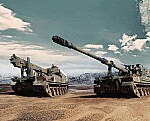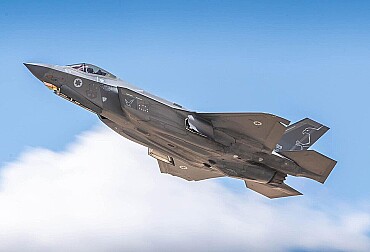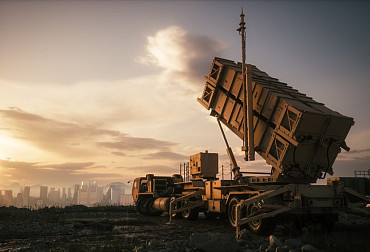How will Europe allocate 1.5% of GDP to defense infrastructure?
A landmark agreement was reached at the NATO summit in The Hague in June. Member states pledged to spend a total of 5% of their GDP on defense by 2035, with 3.5% going to traditional military spending and 1.5% to defense-related areas. These include the protection and development of critical infrastructure, civil emergency planning, cyber defense, and innovation in the defense industry. The new commitment reflects the changing security environment, where the ability to move troops and equipment across the continent, keep supply lines open, and protect infrastructure from physical and digital attacks is becoming increasingly important.
As Apostolos Tzitzikostas, European Commissioner for Transport and Security, pointed out, this is a major shift: "It's not just about tanks or planes. We need to make sure our soldiers get where they need to be and that they have fuel, electricity, and communications." This broader interpretation of defense spending gives member states the opportunity to take into account investments that were not previously eligible under NATO budgets. At the same time, it also allows the alliance's strategic needs to be aligned with national development goals.
Italy has taken a unique approach to this opportunity and decided to include the construction of a bridge across the Strait of Messina between Calabria and Sicily in its defense spending. Prime Minister Giorgia Meloni defends the project as part of defense infrastructure: "Southern Europe must be prepared for crisis scenarios. This bridge is not just for passengers—it will enable the rapid transfer of supplies and equipment to Sicily, which is key to the defense of the Mediterranean." In addition, Rome is proposing that the expansion of airports and the modernization of port infrastructure be included in defense spending. Critics, however, point out that this is a controversial precedent with little international significance. In these cases, it is difficult to imagine a connection with specific NATO defense plans.
The Baltic states have chosen a different path. Estonia, Lithuania, and Latvia are not trying to find a gray area, but are instead introducing projects that fit precisely into the military plans of the North Atlantic Alliance. According to Tuuli Duneton of the Estonian Ministry of Defense, there should be no improvisation: "We cannot classify anything that comes to mind as defense infrastructure. These must be investments that directly support NATO's defense plans." Duneton added that, in cooperation with Alliance planners, there is already a list of areas where 1.5% of GDP needs to be allocated annually. Estonia therefore includes in its defense spending, for example, the modernization of roads for the movement of military equipment, the expansion of logistics centers, and the strengthening of cyber capabilities. "We know exactly what is needed—we have no reason to manipulate the figures," Duneton emphasized.
Estonian Foreign Minister Margus Tsahkna has also adopted a similar pragmatic approach. "Estonia does not need to resort to any accounting tricks," he said in an interview with Eesti Rahvusringhääling. "We are already investing in railways, roads, and cyber security to an extent that practically covers the entire 1.5% target. These expenditures are real and targeted." A concrete example is Rail Baltica, a new 870-kilometer high-speed rail line that will connect Poland with the Baltic states and integrate the region into the European rail network. It includes transport terminals, security technology, and full compatibility with European allies. With a track gauge of 1,435 millimeters (Western standard), Rail Baltica has become not only an infrastructure project but also a symbolic one, as the Baltic railways are still based on the Russian standard of 1,520 millimeters.
The different approaches often reflect different perceptions of threats and strategic priorities among northern and southern European NATO members. While the former group, since the start of the war in Ukraine, has focused on conventional defense, rapid troop deployment, and logistical preparedness against Russia, southern European countries (France, Italy, Spain, and others) continue to perceive instability in Africa, migration, hybrid attacks, and disruption of trade routes in the Mediterranean as the main threats. It is precisely this geopolitical asymmetry that is reflected in the approach to the new 1.5% target. Estonia and Poland are planning railways, fuel depots, and logistics centers directly connected to the eastern wing of the alliance, while Italy and Greece are pointing to the need to protect southern sea corridors and are proposing port or coastal projects. This in itself is not a problem, provided that these projects are in line with alliance planning. However, as the German think tank Bertelsmann Stiftung warns, without a transparent approval process, this diversity could lead to a loss of cohesion: "There is a risk that countries will pursue their domestic interests exclusively and mask them as the fulfillment of alliance goals."
Meanwhile, Germany and Romania are focusing on specific projects that are important for cross-border logistics within the alliance. Berlin has approved a large-scale project to build a new pipeline system, CEPS (Central Europe Pipeline System), which will transport aviation fuel from Bavaria through the Czech Republic to Poland and the Baltic states. According to Defense Minister Boris Pistorius, this is a backbone supply system without which any defense operation on the eastern border would be logistically unsustainable. "Our troops need reliable supplies. Even the most modern weapons cannot function without fuel," Minister Pistorius said. In Romania, a new runway is being built at the Mihail Kogălniceanu air base, which is scheduled to be operational for NATO aircraft in 2027. Both projects have a good chance of being classified as defense-related infrastructure spending.
The allies' emphasis on supply naturally also applies to the Czech Republic, which, thanks to its location in the center of Europe, plays the role of a transit country and logistics hub, with increasing demands on the Czech Armed Forces to provide host nation support (HNS) to Alliance forces in connection with the growing number of allied troop movements across the Czech Republic. The potential lies primarily in the railway network, where extensive modernization projects have been planned and launched in recent years. Among these, the preparation of high-speed lines, which are to take over the main burden of passenger transport in the future, thereby freeing up capacity on the existing infrastructure for the transport of goods and military equipment, occupies a special place. In addition, modernization work is continuing on backbone connections, such as the Brno–Přerov line, which is part of the eastern logistics axis. These investments, which draw hundreds of millions of euros from EU funds, can logically be counted toward the 1.5% target if they are framed as dual-use projects.

The same applies to Václav Havel Airport in Prague, which is planning to build a parallel runway. This project will significantly increase capacity for both passenger and cargo transport. In crisis situations, it can be used as a logistics hub for the delivery of civilian and military equipment. As Apostolos Tzitzikostas noted in the Wall Street Journal: "European ports and airports are the most vulnerable points in the event of war. If we do not protect them and adapt them to military needs, we will jeopardize the alliance's ability to act."
The project to build a logistics center in Mošnov in the Ostrava region is very specific and clearly classified as defense. A facility for 300 soldiers will be built on an area of 50 hectares, which will serve the Czech Army and its allies. The complex will be connected to the railway and motorway and will be able to host allied troops for short periods during exercises or crisis operations. The state is investing billions of crowns in the project, with construction set to begin around 2028.
Although the Czech Republic has not yet published a plan to meet the 1.5% alliance target, it has a relatively broad project portfolio. The preparation of investments will play an important role; they must not be scattered but concentrated under a clearly defined strategic framework. This must reflect both national needs and alliance plans. The warning from analysts at the Bertelsmann Stiftung that without clear criteria there is a risk of fragmentation and abuse of the system should be taken seriously. While some countries (such as Estonia) are already fully integrating project selection with defense planning, others (such as Italy) are taking an opportunistic approach. It is this dichotomy that will determine whether NATO's new spending structure will be a real tool for strengthening the security of the entire alliance or just an accounting trick with no strategic impact.








